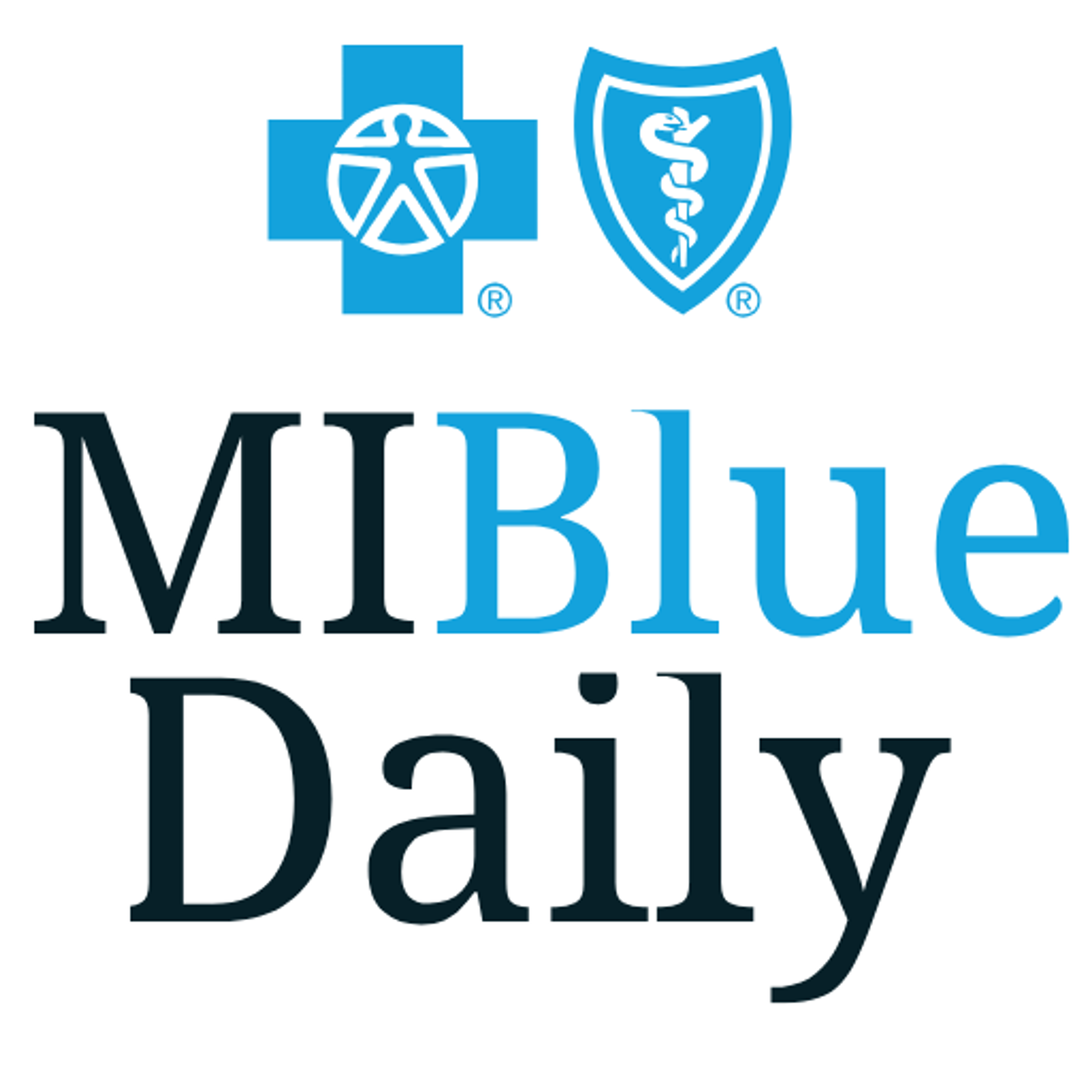Blue Cross Blue Shield of Michigan Reports 2024 Financial Performance

Blue Daily
| 10 min read

Following are remarks made by Andy Hetzel and Paul Mozak to the news media on March 3, 2025 as Blue Cross Blue Shield of Michigan reported its 2024 financial performance.
Andy Hetzel is Vice President, Corporate Communications, Blue Cross Blue Shield of Michigan.
Paul Mozak is Executive Vice President and Chief Financial Officer, Blue Cross Blue Shield of Michigan.
Andy Hetzel:
“The Generally Accepted Accounting Principles (GAAP) financials are a complete, all-inclusive picture of the performance of the Blue Cross Blue Shield of Michigan enterprise. As a nonprofit mutual, Blue Cross has evolved beyond our traditional health insurance business into a diversified, multi-business enterprise of national scale.
Our diversified business and national reach are reflected in:
- Blue Cross Blue Shield of Michigan is one of the nation’s 10 largest health insurers.
- Blue Care Network is a leading HMO.
- Blue Cross Complete of Michigan is one of Michigan’s three largest Medicaid HMO plans.
- Our Lansing-based, AF Group subsidiary is one of the top 10 largest workers' compensation writers in the nation.
- Our Emerging Markets division continues to support and diversify our business and position us as a national leader in the growing Medicare Advantage market.
The diversification of our business is structured to financially support the 86-year-old, not-for-profit mission of Blue Cross Blue Shield of Michigan – to stand behind our health insurance members with affordable products that provide access to health care – while strengthening our local communities here in Michigan.
As our president and CEO, Tricia Keith, has made clear in her recent public statements and appearances, Blue Cross’s mission to promote access to affordable care is under strain from nationwide trends – including surging utilization of expensive medical services and high-cost prescription drugs. In 2024, health insurance plans across the country were faced with these massive cost pressures. For Blue Cross Blue Shield of Michigan, 2024 was the fourth straight year our company paid more for health care than we earned in premiums. For every dollar Blue Cross took in in premiums in 2024, we paid almost $1.04 in claims. Across millions of claims, the continuing nature of this trend is unsustainable. And the result is unacceptable to the people we serve – our members and our employer group customers – whose budgets are now being challenged by health insurance costs rising above 10 percent.
Health care prices, combined with surging use of an expensive system, continue to be the primary drivers of higher health insurance costs.
In total, Blue Cross Blue Shield of Michigan experienced a $3 billion increase in medical and pharmacy claims costs in 2024 and will report a financial loss for the year. As Paul will explain in further detail, we experienced our fourth consecutive year of underwriting losses as a result. These increases and cost pressures are now being felt by our members and customer groups through higher premiums because health insurance costs are the end of the equation. At the beginning of the equation are the unregulated prices charged by the prescription drug industry, expensive medical prices charged by health care providers, and an aging and unhealthy population that is using medical care at some of the highest levels we’ve seen. Health insurance rates are pressured as a result.
We expect pressures on insurance premiums to continue in 2025 – but we want our customers to know that Blue Cross retains a strong balance sheet, despite the pressures our industry has experienced.Blue Cross is committed to affordability, and we will use every lever at our disposal to do what we can to provide it.
The cost of running our own business – including executive compensation – is 7 cents of every health care dollar. We are taking steps to address our own administrative costs – with a target of $600 million in savings over three years. But this can’t solve for affordability alone. We need our partners in health care – providers and drug makers especially – to recognize the health insurance affordability challenges faced by the people we collectively serve – and join us in delivering solutions.
We’ve mentioned before Blue Cross’ role as a major force in the health care economy. In 2024, Blue Cross and our subsidiaries paid an average of $100 million per day for the care and benefits of members in Michigan and around the nation. This is $12 million more paid per day than 2023 and $20 million more per day than we paid out just two years ago. Again, this illustrates the dramatic price increases we are facing that are pressuring health insurance costs in Michigan.
Increases in Blue Cross medical and pharmacy claims were significant in 2024, both in total dollars and year-over-year trends. Medical claims costs rose roughly 7.7 percent vs. the prior year while pharmacy claims costs rose by roughly 14.6 percent. Both of these increases are significantly higher than general inflation over the same timeframe, which was approximately 2.9 percent, according to the U.S. Bureau of Labor Statistics.
Despite our financial pressures, Blue Cross recognizes the critical importance of giving back to promote the health of everyone in Michigan. We will continue our longstanding commitment to the Michigan Health Endowment Fund in 2025 – paying the next installment of $100 million to the Fund in April – furthering our ongoing commitment of $1.56 billion to the fund over an 18-year period. The Fund enables important work at the community level across Michigan to promote better health and protect the vulnerable – and Blue Cross is proud to enable its mission.”
Paul Mozak:
“I’m going to provide commentary on Blue Cross Blue Shield of Michigan’s 2024 financial results.
We provided you [media members] with financial numbers that will appear in our audited statement, to be published in May in the company’s annual report using Generally Accepted Accounting Principles.
At the end of the news release, there is also information about financial results from our statutory filing with the State of Michigan. There are different accounting standards between statutory accounting and generally accepted accounting principles, so these two methods calculate our financial performance differently. GAAP accounting – our primary focus of today’s briefing – shows the full enterprise financial picture. As Andy explained earlier, we are a multi-company enterprise operating nationally in multiple lines of business.
As a nonprofit mutual, Blue Cross purposely promotes health insurance affordability, first and foremost, by working hard to keep our profits in the low single-digit range. There are three primary areas of income that are important to meet this objective – revenues from our health insurance business; revenues earned by our diversified subsidiaries; and investment earnings.
Over the last 10 years, Blue Cross’s average operating margin has been marginally negative, averaging negative 0.8 percent of revenue. The small positive margin we would have preferred over that time has been affected by the past four years of health care cost pressures Andy addressed earlier.
In 2024, Blue Cross Blue Shield of Michigan continued to experience tremendous cost pressures due to significantly higher medical utilization within an expensive health care system, along with skyrocketing prescription drug costs. Despite these challenges, we have remained a trusted partner to our members, customer groups and providers, continuing to provide access to high-quality health care.
For 2024, Blue Cross Blue Shield of Michigan will report an operating margin of negative 4.2 percent - which equates to an operating loss of $1.7 billion dollars. The loss was significantly impacted by the rapidly increasing cost and use of health care services, and growth of pharmacy costs, that we have been discussing.
Earlier I mentioned the importance of our Emerging Markets subsidiaries. AF Group, Blue Cross’s wholly owned specialty insurance subsidiary, contributed $204 million to enterprise results including investment returns reported in the consolidated financial statements. This helped offset the impact of skyrocketing health care costs on our bottom line.
Our conservatively invested portfolio of stocks and bonds generated a positive return of $671 million on a GAAP basis.
While strong investment performance contributed to the bottom line, it could not compensate for total underwriting losses on our core health care business. In total, after paying out $3 billion more for medical and pharmacy services for our members in 2024 than in 2023, Blue Cross experienced a bottom-line loss of $1.02 billion on enterprise revenue of $40.6 billion for the year.
We mentioned our financial results for 2024 were impacted by massive industry cost pressures. Here are some examples:
In 2024, Blue Cross experienced an increase of $3 billion over 2023 in medical and pharmacy claims costs. This followed an increase of $3.2 billion in 2023, resulting in an increase of $6.2 billion over the past two years.
We saw increased utilization of health care services across all lines of business – Commercial, Medicare Advantage and Medicaid. Medical claims increases were driven by increased utilization of inpatient acute care and surgery, outpatient surgery, emergency room visits, medical drugs, behavioral health and professional services, resulting in an increase of $2.1 billion dollars over 2023.
Utilization levels increased across a number of categories in 2024, which may be a result of pent-up care needs and deteriorating population health. The statistics attributable to population health care are cause for concern. Over $650 million in costs can be attributed to the change in population health year over year. Population health studies suggest higher incidence rates of cancer and cardiac events. In the over 65 population, for example, we have seen an increase in prevalence of certain conditions since 2019, such as 12.5 percent more heart disease, 17 percent more cancer and 16 percent more kidney diseases.
Health care spending on facilities was higher than 2023 by $1.2 billion driven by price and utilization changes. The increase in inpatient utilization for surgery and acute admissions was over $250 million.
The utilization rate for inpatient acute stays increased by 7 percent in 2024. Significant increases were observed for use in septicemia, pneumonia and cardiac arrhythmia.
Doctor and advance practice provider visits increased across all sites of care, including office visits, urgent care visits and emergency room visits. Office visit utilization increased by 6 percent in 2024, significantly higher than the 2 percent to 3 percent utilization trends observed over the past several years.
Utilization of behavioral health care services has increased in all patient populations. Blue Cross experienced an increase of $175 million dollars in behavioral health costs in 2024.
The company experienced an increase of $900 million dollars in pharmacy claims costs in 2024, including $544 million dollars for specialty drugs, of which $215 million dollars was attributed to utilization for new indications on autoimmune drugs. Autoimmune drugs now make up roughly 16 percent of our total pharmacy spend.
GLP-1 drugs alone, used for diabetic therapy and weight management, produced $1.1 billion dollars in claims in 2024, more than a 29 percent increase from 2023.
Among our Medicare Advantage population, diabetic therapy drugs make up the top three contributors to Medicare trend. Antineoplastics, anticoagulants and autoimmune drugs contributed significantly to pharmacy costs for these members as well.
Membership
I’d also like to touch on membership because our stable membership continues to help us manage through cost challenges. Blue Cross Blue Shield of Michigan continues to be the leading choice for health insurance among businesses and individuals in our state. Nationwide membership for BCBSM, Blue Care Network and Blue Cross Complete of Michigan totaled 5,140,341 at year-end 2024, a slight decrease of about one and a half percent, or approximately 64,000 members, primarily driven by expected losses in the Medicaid market.
There are specific membership numbers in the news release you received.
Capital Position
Insurance industry regulators use a method called Risk Based Capital to measure an insurance company’s financial strength. Regulators want to be assured that an insurance company is financially stable and able to weather risks in the marketplace.
Our Risk Based Capital position was 498 percent in 2024. This level of RBC means that – despite the losses we have experienced recently – our company has the financial foundation to stand behind our members’ care.
Revenue
Our consolidated revenue, which includes Blue Cross and our subsidiary companies, totaled $40.6 billion in 2024, up from $36.3 billion in 2023.
Statutory filing with state
Those are our 2024 financial results based on GAAP. Now I’d like to address our statutory financial results.
Blue Cross has filed statutory-based accounting statements (SAP) with our Michigan regulators. As I mentioned before, these statutory numbers do not reflect a comprehensive view of BCBSM’s consolidated enterprise performance as a mutual company.
Under SAP accounting, the company posted a statutory net underwriting loss of $817 million on statutory revenue of $6.8 billion in 2024, after reinsurance accounting.”
BlueCross BlueShield of Michigan, a nonprofit mutual insurance company, is an independent licensee of the Blue Cross and Blue Shield Association. For more company information, visit bcbsm.com and MIBlueDaily.com.





